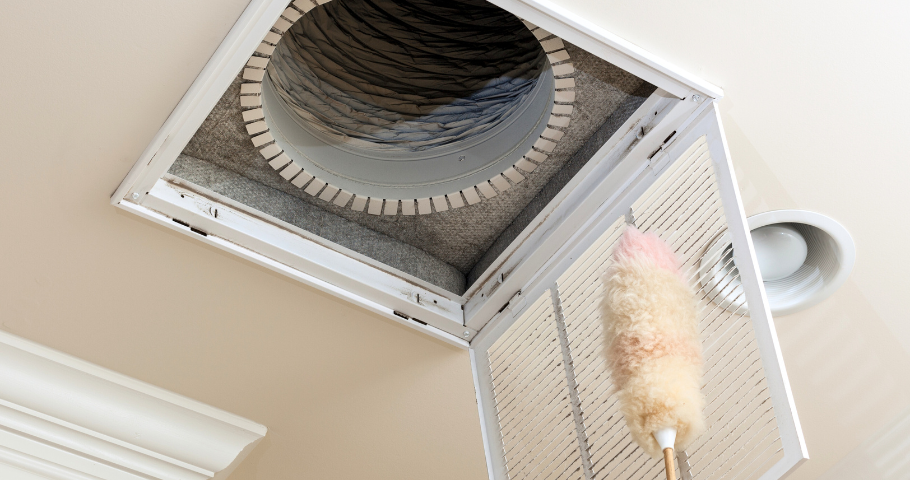Top 5 Hidden Sources of VOC Exposure in Your Home – and How to Neutralize Them
When we think about air pollution, we often imagine smoggy highways or wildfire smoke. But one of the most dangerous—and overlooked—forms of pollution is happening silently inside your home: VOC exposure.
Volatile organic compounds (VOCs) are gases emitted from everyday household items like furniture, paints, cleaners, flooring, and even personal care products. These emissions pose a significant risk to your indoor air quality and are recognized as major contributors to IAQ home hazards.
Even at low levels, VOC exposure can cause symptoms like headaches, fatigue, dizziness, and respiratory irritation. Long-term exposure has been associated with more serious conditions, including hormonal disruption, developmental problems in children, and even cancer. The real danger? These household toxins are often invisible and odorless—hiding in plain sight.
Below, we uncover five common but hidden sources of VOC exposure in your home—and offer practical ways to neutralize them so you can breathe easier and live healthier.

1. Furniture & Upholstery: The Off-Gassing Offenders
That “new couch smell”? It’s not as harmless as it seems. It’s off-gassing—VOCs being released from synthetic materials like particleboard, foam, and flame-retardant fabrics.
Furniture made with adhesives and polyurethane foam can emit harmful VOCs like formaldehyde and toluene for months or even years after purchase. These emissions linger in the air, especially in poorly ventilated homes.
What to Do:
- Choose low-VOC or GreenGuard-certified furniture
- Allow new items to off-gas outside or in well-ventilated spaces
- Use a VOC-neutralizing air purifier like the EnviroKlenz Air System
- Regularly clean and rotate cushions to reduce accumulation
2. Paints, Sealants & Adhesives: Lingering Toxins
Paints, wood stains, sealants, varnishes, and adhesives all contain VOCs that continue to off-gas long after they’ve dried. The problem compounds in enclosed spaces with little ventilation.
Even if your last home project was months ago, those walls and floors could still be contributing to VOC exposure.
What to Do:
- Switch to zero-VOC or low-VOC paints and adhesives
- Avoid storing open cans indoors
- Let painted rooms air out with fans and cross-ventilation
- Use VOC detectors and track levels with platforms like SMARTView AQI for real-time awareness
Explore EPA guidance on indoor VOCs
3. Cleaning Products & Air Fresheners: Scented Hazards
That “clean” lemon scent from your favorite spray? It might be doing more harm than good. Many household cleaning products, air fresheners, and scented candles contain VOCs like benzene, ethanol, and formaldehyde.
In fact, a study by the American Lung Association found that conventional cleaners release hundreds of VOCs—many with known health risks.
What to Do:
- Use fragrance-free or green-certified cleaning products
- Avoid aerosols and plug-in air fresheners
- Use exhaust fans while cleaning and store products safely
- Place VOC-specific air purifiers in high-use areas
- Monitor VOC levels through SMARTView AQI for alerts on poor indoor air quality
4. Personal Care Products: Invisible Contributors
Lotions, shampoos, perfumes, nail polish, and hairspray all release volatile organic compounds (VOCs), which linger in indoor spaces and affect both your health and home environment. In enclosed spaces like bathrooms and bedrooms, these emissions build up quickly—affecting not only your body, but also the air you breathe.
What to Do:
- Choose natural, fragrance-free personal care products
- Apply near open windows or under exhaust fans
- Tightly seal and properly store items after use
- Consider using an at-home test like Home Air Check to identify VOC exposure hotspots in your home
5. Flooring & Carpets: Hidden Long-Term Polluters
From vinyl to laminate to wall-to-wall carpet, flooring can emit VOCs from adhesives, dyes, finishes, and foam padding, increasing VOC exposure. Formaldehyde is a common component in engineered wood and synthetic carpet backings.
This exposure to VOCs can be especially problematic in bedrooms and nurseries, where people spend extended hours breathing the same air.
What to Do:
- Use low-VOC flooring certified by FloorScore or GreenGuard
- Clean carpets with a HEPA vacuum weekly
- Avoid chemically treated rug sprays and deodorizers
- Place air purifiers near the floor to catch upward VOC drift
- Choose natural fiber rugs like wool or cotton
Beyond VOCs: Other Indoor Air Pollution Culprits
While volatile organic compounds are a major concern, they’re not the only contributor to indoor air pollution. Particulate matter from cooking, pet dander, dust mites, and even mold spores can aggravate respiratory issues and compound the effects of VOCs.
When VOCs mix with airborne particles, the combined pollution load can overwhelm your lungs and reduce your immune system’s ability to respond. This is especially concerning for children, older adults, and individuals with asthma or preexisting respiratory conditions.
Even the Environmental Protection Agency (EPA) identifies indoor air pollution as one of the top five environmental risks to public health. According to the EPA, air inside your home can be 2–5 times more polluted than outside—and sometimes even worse.
What You Can Do:
- Run high-efficiency HEPA filter air cleaners to capture allergens and airborne particulates
- Regularly dust, vacuum with a HEPA-rated vacuum cleaner, and wash bedding – bonus points for regular dusting of your air vents!
- Consider adding humidity control (dehumidifiers or humidifiers) to reduce mold risks
- Use air filters in HVAC return vents and replace them every 1–3 months

HVAC Systems & Whole-Home VOC Control
Your HVAC system can either help or hinder your efforts to reduce VOCs and VOC exposure, and improve air quality. Traditional systems circulate air but often lack filtration components designed to target gases and chemicals.
Many HVAC setups only use coarse filters to trap large dust particles—not smaller contaminants like VOCs, smoke, or fine particulates. If you’re serious about long-term air health, integrating VOC-neutralizing elements into your HVAC system is a smart move.
Modern upgrades can include:
- Whole-home air filters that target gases and particulates
- Activated carbon filters for chemical adsorption
- Smart sensors that monitor air in multiple zones
- Integration with systems like SMARTView AQI for real-time IAQ tracking
Don’t Overlook the Outdoors: Seasonal VOC Intrusion
While indoor sources are primary, outdoor VOCs can enter your home too—especially during high-pollution or wildfire seasons. This includes auto exhaust, pesticide drift, and industrial emissions.
Smart platforms like SMARTView AQI allow you to compare outdoor AQI and indoor VOC exposure levels to take timely action. When outdoor toxins infiltrate your home, they further compromise indoor air quality, especially if proper filtration and sealing strategies aren’t in place.

How to Neutralize VOCs and Improve Your Indoor Air Quality
You’ve identified the sources—now it’s time to take action. Here’s how to reduce VOC exposure and tackle common indoor air quality home hazards:
- Run a VOC-neutralizing air purifier, such as the EnviroKlenz SMART Cube™ or SMART Mount™, which uses earth-mineral technology to neutralize instead of trapping gases.
- Monitor your home’s air quality with real-time platforms like SMARTView AQI that track VOCs, CO₂, pollen, and more.
- Ventilate regularly—especially after cooking, cleaning, or unboxing new items.
- Declutter and reduce synthetic fabrics or plastics in your living space.
- Transition to chemical-free living and look for third-party product certifications.
- Invest in professional VOC testing if symptoms persist or you’re concerned about long-term exposure.
Each of these changes can contribute to reducing air pollution and VOC-related health risks inside your home.
Clean Air, Clear Conscience
You may not see volatile organic compounds (VOCs)—but your body can definitely feel them. From headaches and fatigue to more serious risks, VOC exposure is a growing concern in modern homes—and one of the most underestimated sources of air pollution we encounter daily.
By being proactive—choosing safer products, improving ventilation, and using smart tracking tools—you can reclaim the health of your indoor space. With fewer toxins and more awareness, you’ll breathe easier, sleep better, and feel more energized every day.
Looking to take the first step toward VOC-free living? Start tracking your home’s air with SMARTView AQI and discover how clean your air really is.

